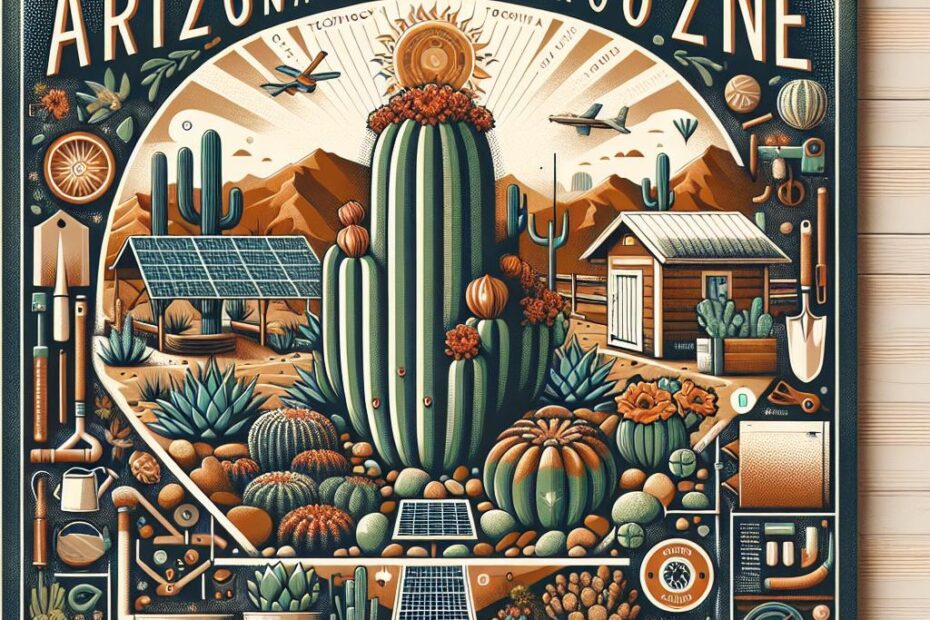Arizona Gardening Zone: A Guide to Growing Plants in the Grand Canyon State
Introduction:
When it comes to gardening in Arizona, understanding the unique climate and conditions of the state is essential for success. Arizona is known for its extreme temperatures, low humidity, and sporadic rainfall, which can pose challenges for gardeners looking to cultivate a thriving garden. However, with the right knowledge and strategies, it is possible to grow a wide variety of plants in the Grand Canyon State.
Understanding the Arizona Gardening Zone:
The United States Department of Agriculture (USDA) has developed a plant hardiness zone map that divides the country into different zones based on average annual minimum winter temperatures. These zones help gardeners determine which plants are most likely to thrive in their area.
In Arizona, the climate varies significantly from region to region, which means that the state is divided into multiple gardening zones. The northern part of the state, including cities like Flagstaff and Sedona, falls into zones 5a and 6a, while the southern part, including Phoenix and Tucson, falls into zones 9a and 10a.
Each zone has its own unique characteristics, such as temperature ranges, frost dates, and growing seasons, which can impact the types of plants that are suitable for cultivation. By knowing which gardening zone you are in, you can make informed decisions about what to plant in your garden.
Benefits of Gardening in Arizona:
While gardening in Arizona may present challenges, there are also numerous benefits to cultivating a garden in the Grand Canyon State. Some of the advantages include:
- Year-round gardening: Arizona’s mild winters and long growing season allow gardeners to plant and harvest crops throughout the year.
- Diverse plant selection: Due to the state’s varied climate and topography, Arizona gardeners have the opportunity to grow a wide range of plants, from desert-adapted succulents to cold-hardy vegetables.
- Water conservation: By choosing drought-tolerant plants and implementing water-saving techniques, Arizona gardeners can reduce water usage and promote sustainability in their gardens.
Practical Tips for Arizona Gardeners:
To help you make the most of your Arizona garden, here are some practical tips to keep in mind:
- Choose native and drought-tolerant plants: Selecting plants that are well-suited to Arizona’s arid climate can help conserve water and reduce maintenance requirements.
- Provide adequate sun and shade: Most plants in Arizona thrive in full sun, but it is essential to provide shade during the hottest part of the day to prevent sunburn.
- Mulch and amend soil: Mulching can help retain moisture and regulate soil temperature, while amending soil with organic matter can improve its fertility and structure.
- Use efficient irrigation systems: Drip irrigation and soaker hoses are ideal for delivering water directly to the roots of plants while minimizing water waste.
- Be mindful of planting times: Due to Arizona’s extreme temperatures, it is important to plant heat-sensitive crops like tomatoes and peppers in early spring or late summer to avoid exposure to intense heat.
Case Study: Successful Vegetable Gardening in Arizona
One example of successful vegetable gardening in Arizona is the use of raised beds and container gardening. By creating raised beds filled with a custom soil mix and growing vegetables in containers, gardeners can control soil quality, drainage, and water retention, which are critical factors in Arizona’s arid climate.
First-hand Experience: Growing Roses in Arizona
As a seasoned gardener in the desert Southwest, I have had great success growing roses in Arizona. By selecting heat-tolerant rose varieties, providing ample sun and water, and amending the soil with compost, I have been able to cultivate beautiful and fragrant roses that thrive in the intense Arizona heat.
Conclusion:
In conclusion, gardening in Arizona may present unique challenges, but with the right knowledge and strategies, it is possible to create a beautiful and productive garden in the Grand Canyon State. By understanding your gardening zone, selecting appropriate plants, implementing water-saving techniques, and following practical tips, you can cultivate a thriving garden that thrives in Arizona’s arid climate. Whether you are a novice gardener or a seasoned pro, Arizona offers endless opportunities for gardening success. Happy gardening!
